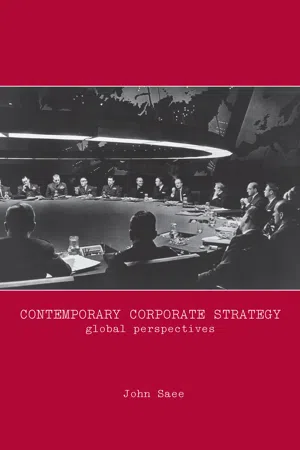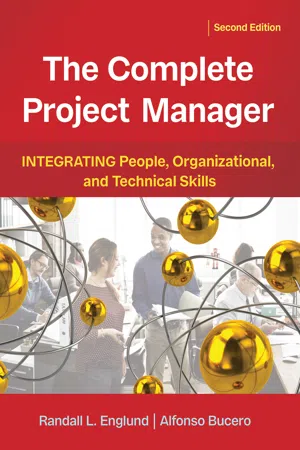Business
Negotiation
Negotiation in business involves a process of communication and compromise between parties to reach a mutually beneficial agreement. It often includes discussing terms, finding common ground, and making concessions to achieve a favorable outcome. Effective negotiation skills are essential for successful business deals, partnerships, and resolving conflicts.
Written by Perlego with AI-assistance
Related key terms
10 Key excerpts on "Negotiation"
- eBook - ePub
Strategic Corporate Negotiations
A Framework for Win-Win Agreements
- Andrea Caputo(Author)
- 2019(Publication Date)
- Palgrave Pivot(Publisher)
That is Negotiation. Negotiations are essential and fundamental for businesses. Improving Negotiation skills, as well as increasing the ability to negotiate effectively, is crucial in the managerial, political, and business contexts. It is commonly acknowledged within the literature that Negotiation is a process through which two or more parties could reach a needed joint decision while having different preferences (e.g., Fisher et al. 1981 ; Lax and Sebenius 1986 ; Lewicki et al. 2014 ; Pruitt 1981 ; Raiffa et al. 2002 ; Rubin and Brown 1975 ; Zartman 1977). Due to the interdependence, which reigns over and inside multi-actor decision processes (J. D. Thompson 1967), Negotiation outcomes are affected by all the decisions made by all the parties involved. It is quite straightforward how, whatever approach we take, the strategy-making process is permeated with a series of Negotiations that surround the decisions taken. A Negotiation process underlies board meetings where C-level managers take corporate strategic decisions. At the same time, the information brought to the board are the result of a negotiated process where managers strategically decide how to approach the board meetings. Similarly, if we look at any strategy textbook, almost any preparatory activity of analysis to support the strategy-making process can be associated with a Negotiation. The same happens when we move the level of analysis to the implementation of strategy. Managers negotiate with each other on how the strategic implementation takes place; they also negotiate at the external of the organization to put the strategy in action, for example, with suppliers, customers, lobbying organizations, and all the stakeholders one can imagine. Given those almost obvious thoughts, everyone with managerial experience would agree that Negotiation seems to be left quite aside from strategy literature - Mohammad Ayub Khan, Noam Ebner, Mohammad Ayub Khan, Noam Ebner(Authors)
- 2018(Publication Date)
- Palgrave Macmillan(Publisher)
Negotiation across cultures.No matter which professional activities you engage in in your daily life, learning about the art and science of Negotiation will be useful for your success and growth. The human history is filled with examples illustrating the extent to which Negotiation has always been present in human life, even if different names were used to describe the process. Differences associated with commercial transactions and conflict in interpersonal interactions have always been resolved in a harmonious and friendly manner through Negotiation.The Concept and Scope
First, let us define the term “Negotiation”. The term “Negotiation” means discussion, bargaining , give and take , interaction, and dialogue. Furthermore, Negotiation is a process where two or more parties with differences in opinions, interests, and objectives come together and try to reach an agreement through exploring options which are mutually acceptable and beneficial for them (Cellich & Jain, 2004 ). The term “Negotiation” also refers to the process and system through which two or more parties, who are in a conflict situation over specific expected and unexpected outcomes, attempt to reach agreement through face-to-face dialogue. Negotiation is the constructive and positive alternative to haggling or arguing (including “formal argument” in the forms of adjudication and arbitration ), and it aims at building an environment for mutually acceptable agreement rather than searching for winning a battle (Pillutla & Nicholson, 2004 ). Other researchers in the field of Negotiation define Negotiation as an attempt by parties involved in the conflict to achieve a mutually acceptable outcome by clarifying and discussing issues; establishing the areas of controversy; clarifying positions taken and options for agreements; discovering and confirming areas of contracts; and explaining the terms of agreements and duties of the parties (Hartzell, 2006 ). Negotiation involves individuals, groups, organizations, and nations talking to each other directly (direct Negotiation ) or through intermediaries (mediated Negotiation) to find solutions to conflicting issues, to deal with transactions of mutual interests, or to address other human problems of diverse nature and scope (Kellecher & Wein, 2006- eBook - ePub
- Chimay Anumba, Zhaomin Ren, O.O. Ugwu(Authors)
- 2007(Publication Date)
- Routledge(Publisher)
Chapter 4 Negotiation theoriesZ. Ren, C. J. Anumba and O. O. Ugwu4.1 Introduction
Negotiation, as an important human co-operation approach, has been studied and defined by many researchers in different research domains, such as: economics, society, politics and AI systems. For example,- Collins Cobuild English Dictionary – Negotiations are formal discussions between people who have different aims or intentions, especially in business or politics, during which they try to reach an agreement.
- Zartman (1977) – Negotiation is a joint decision process between two or several parties or their representatives. Negotiation tends to be a matter of finding a formula encompassing the optimum combination of interests of both parties and then of working out the details that implement these principles and affect the agreement. Negotiation is a dynamic process, on-going, involving moves and countermoves.
- Hammer and Clay (1977) – Negotiation is the interaction that occurs when two or more persons attempt to agree on a mutually acceptable outcome in a situation where their orders of preference for possible outcomes are negatively correlated.
- Gulliver (1979) – Negotiation is one kind of problem-solving process, in which people attempt to reach a joint decision on matters of common concern in situations where they are in disagreement and conflict.
- Rosenschein and Zlotkin (1994) – Negotiation is a form of decision-making process where two or more parties jointly search a space of possible solutions with the goal of reaching a consensus (deal).
- Lesser (1998) – Negotiation, the process of arriving at a state that is mutually agreeable to a set of agents, is intimately related to co-ordination.
- From a social-psychological perspective, Bartos (1977) concludes that the nature of Negotiation is to resolve the conflicts between competitive individualism and co-operative collectivism. Negotiation often involves dual and mostly conflicting motivations: the individual (competitive) desire to maximise one’s own utility and the collective (co-operative) desire to reach a fair solution. Negotiations can proceed smoothly only when they are guided by the collective desire for fairness or when the loss of breaking Negotiation is higher than that of reaching an agreement for either party even if negotiators are selfishly motivated.
- eBook - ePub
- John Saee(Author)
- 2007(Publication Date)
- Routledge(Publisher)
(5:152)a process in which at least one individual tries to persuade another individual to change his or her ideas or behavior and it often involves one person attempting to get another to sign a particular contract or make a particular decision. Thus Negotiation is the process in which at least two partners with different needs and viewpoints need to reach an agreement on matters of mutual interest.Arising from the foregoing definitions is the question whether the same applies to cross-cultural Negotiation, an important issue that this chapter is dedicated to exploring in some detail.Meanwhile, Acuff has defined Negotiation as the process of communicating back and forth for the purpose of reaching a joint agreement about differing needs or ideas. Negotiation is a process in which two or more parties exchange goods or services and attempt to agree upon the exchange rate for them (1).Cross-cultural Negotiation defined
A Negotiation becomes cross-cultural when the parties involved belong to different cultures and therefore do not share the same ways of thinking, feeling and behaving (5). Thus, the meaning of the term Negotiation and what it connotates can significantly vary from one culture to another. For example, Americans view Negotiations as an opportunity to resolve contentious issues; Japanese, Chinese, and Mexican cultures view Negotiations as a vehicle to establish a relationship resolving problematic issues is never the first goal (25).All global Negotiations are cross-cultural. Some domestic Negotiations, in spanning across two or more ethnic groups, are also cross-cultural. Global Negotiations contain all of the complexity of domestic Negotiations, with the added dimension of cultural diversity (2).Cross-cultural Negotiations can be very intricate, as each culture, whether it is a high or low context culture, has its own distinctive approach relating not only to the negotiating process but also to their individual and religious practices, idiosyncrasies and expectations, with each culture cohering to their own norms, values, laws and beliefs, impacting on the outcome of the agreement. Members of different cultures focus on diverse aspects of an agreement, for example, one may focus on the legal side and the other on the personal aspects. In some cultures, documenting the agreement is significant while in others the process and actual implementation is the focal point (13). For example, Americans negotiate a contract, while the Japanese negotiate a personal relationship. This is all due to the differences in cultural values and norms which stems from the dissimilarity in individualistic cultures, such as the USA, and collectivist cultures, namely Japan (23). - eBook - ePub
The Complete Project Manager
Integrating People, Organizational, and Technical Skills
- Randall Englund, Alfonso Bucero(Authors)
- 2019(Publication Date)
- Berrett-Koehler Publishers(Publisher)
I (Bucero) learned to be an effective negotiator over the years, although I did not initially believe myself to be a very effective negotiator. However, I now recognize—after making many mistakes while negotiating—that I can learn something in every Negotiation. My suggestions are to be persistent, analyze the way you negotiate, and take action to improve it.The Negotiation Process
Negotiation is: • Communication back and forth for the purpose of making a joint decision • A way of finding a mutually acceptable solution to a shared problem • A path to achieving an ideal outcome: a wise decision, efficiently and amicably agreed upon Negotiation styles include:• Hard (controlling). Hard bargaining is adversarial—you assume that your opponent is your enemy and the only way you can win is if he loses. So you bargain in a very aggressive, competitive way.• Soft (giving in). Soft bargaining is just the opposite. Your relationship with your opponent is so important that you concede much more easily than you should. You get taken advantage of in your effort to please, and while agreement is reached easily, it is seldom a wise one.• P eople: Separate the people from the problem.— P ositions: Focus on interests, not positions.— O ptions: Generate options for mutual gain before choosing one.— O bjectives: Make a decision basedon objective criteria.• BATNA (Best Alternative to Negotiated Agreement). Know their alternatives; know and improve yours.A principled style is much more effective than the preceding ones.Good Negotiations consist of a relentless search for a third alternative. People are presently conditioned to expect relationships to be win-lose. They view most situations from an either/or point of view: either I win or I lose. It must be one or the other. But there is a third alternative in which no one loses, or the loss has been minimized and fairly shared, though it may be harder to find. This is the win-win way, or synergy (Fisher and Ury 2011). - Betty Jane Punnett(Author)
- 2018(Publication Date)
- Routledge(Publisher)
www.publishdonotperish.com accessed April 30, 2018). This is true whether you are at home or running a large multinational or transnational organization. Negotiating is complex anywhere, but it is one of the most important arenas of cross-cultural communication for international managers. Negotiations take place between investors and governments, potential business partners, buyers and sellers, employers and employees; in other words, Negotiations permeate the international business world. Business will not take place unless Negotiations are successful, yet, if the parties come to the negotiating table without understanding the barriers to, and complexities of, cross-cultural communication, there is a high probability that Negotiations will not be successful. In this part of the chapter, we will look at the Negotiation process and how it can differ from one location to another. It is important that negotiators try to understand the Negotiation process from the point of view of the other party because this allows them to be more skillful and improves the likelihood that they will be able to conclude the Negotiations and reach a deal that is beneficial for their organization.The Negotiation Process
The Negotiation process has been described in terms of four stages: relationship building, exchange of task-related information, persuasion, and making concessions and agreements (Adler 1991). These stages occur in all Negotiations. However, groups of people differ in terms of the value placed on each stage of the Negotiation and the time spent on each one. In the following discussion, the Japanese and the Americans are used to illustrate how two groups may approach the same stage from very different perspectives.- Milene Mendes de Oliveira(Author)
- 2019(Publication Date)
- De Gruyter Mouton(Publisher)
With the research project that culminated in this monograph, my aim was to investigate how Brazilian and German business people conceptualize ‘business Negotiations,’ and whether these Brazilian and German conceptualizations are attested or challenged in authentic business Negotiations. The former part of this inquiry – which revolves around conceptualizations of business Negotiations – was the main part of the study. The latter part – i.e., the practice of Negotiations – was a complement to the main one. In the paragraphs that follow, I extrapolate the results of the analyses presented in the previous sections of this chapter by crossing them with anthropological and sociological reflections about the Brazilian and German cultures and societies.To start, I recall my working definition of business Negotiations mentioned in chapter 1 (section 1.3, page 9): ‘a ‘business Negotiation’ is an interpersonal exchange of variable duration and variable number of participants in which business counterparts have goals to reach and depend on the actions, states, and feelings of one another so as to reach these goals’ (emphasis added).Going back to the results, a broad look into the group-level conceptualizations points to an interesting commonality: the salience of path and path-goal image schemas (note that even the blocked move image schema implies a path ), which points to a certain dynamicity associated with business Negotiations. This dynamicity seems to be closely connected with the ‘interpersonal exchange’ feature of business Negotiations.Even though the dynamicity associated with ‘interpersonal exchange’ is a commonality in the two groups, I believe that a different understanding of the nature of this interpersonal exchange sets the Brazilian and the German interviewees’ conceptualizations apart. More specifically, I interpret that the interpersonal exchange taking place has a more personal leaning (i.e., the personal or private connection between business counterparts is foregrounded) in the Brazilian case and a more operative and task-related leaning in the German case.- eBook - ePub
- Randall Englund MBA, BSEE, NPDP, CBM, Alfonso Bucero CSE, MSc, PMP(Authors)
- 2012(Publication Date)
- Berrett-Koehler Publishers(Publisher)
One general path to project success is to meet with key stakeholders, ask for their definitions of success, and negotiate acceptable answers. Pin them down to one key area each. Some surprising replies may come up: “Don’t embarrass me.” “Keep out of the newspaper.” “Just get something finished.” Integrate the replies and work to fulfill the stakeholders’ key criteria.Having this dialogue and negotiating clear criteria early in the project life cycle provides the complete project manager with clear marching orders. Project managers become better leaders and managers of people, not just projects, when they are aware that success or failure is dependent upon the people involved.THE Negotiation PROCESS
Negotiation is:- Communication back and forth for the purpose of making a joint decision
- A way of finding a mutually acceptable solution to a shared problem
- A path to achieving an ideal outcome: a wise decision, efficiently and amicably agreed upon.
- Hard (controlling): Hard bargaining is adversarial—you assume that your opponent is your enemy and the only way you can win is if he loses. So you bargain in a very aggressive, competitive way.
- Soft (giving in): Soft bargaining is just the opposite. Your relationship with your opponent is so important that you concede much more easily than you should. You get taken advantage of in your effort to please, and while agreement is reached easily, it is seldom a wise one.
- Principled (P2O2 )
- – P eople: Separate the people from the problem.
- – P ositions: Focus on interests, not positions.
- – O ptions: Generate options for mutual gain before choosing one.
- – Make a decision based on o bjective criteria.
- – BATNA (Best Alternative to Negotiated Agreement): Know their alternatives, and know and improve yours.
Good Negotiations consist of a relentless search for a third alternative. People are presently conditioned to expect relationships to be win/lose. They view most situations from an either/or point of view: either I win or I lose. It must be one or the other. But there is a third alternative in which no one loses or the loss has been minimized and fairly shared, though it may be harder to find. This is the win-win way, or synergy (Fisher and Ury 1981). - eBook - ePub
A Handbook of Work and Organizational Psychology
Volume 3: Personnel Psychology
- De Charles, P J D Drenth, THIERRY HENK(Authors)
- 2013(Publication Date)
- Psychology Press(Publisher)
As far as the principle interests are concerned, the principle of equal concessions is perfectly applicable to the joint determination of the rate of exchange. It is seen as just if both parties take equally-sized steps to bridge their differences. Research has shown that negotiators tend to translate equality in the frequency rather than the size of the concessions (Wall, 1985). One tends to experience injustice if concessions are not rewarded by any counter-concessions at all. However injustice can also be felt if an unsuitable action is expected in return (Foa & Foa, 1980), because one is cheating the opponent, or because one wants to renegotiate an original concession or sale agreement. This can lead to feelings of guilt or shame about one’s own behaviour and it is usually in one’s own interst to avoid it, if at all possible.In summary, during a trade Negotiation one exchanges outcomes with another party, in such a way that both parties value that which they acquire more than that which they have to give up. Each person’s interests lie primarily and especially in a suitable means of exchange, an acceptable exchange rate and the absence of a better alternative agreement. At the same time the progress from a more competitive to a more cooperative process, the future mutual relationship and decent sales behaviour are also of importance.Tactics
As has already been stated; buyer and seller pursue a mutual agreement about the exchange of outcomes of a particular size and against a particular rate of exchange. In this process a balance in their tactical behaviour must be found between promoting, on the one hand the competitive own interest in the exchange and on the other hand the cooperative joint interest of a successful exchange. This dilemma between competition and cooperation is inherent in all Negotiations and has already been discussed with respect to the aspiration level of the parties, the loss and gain of face and the tactic of tenacious flexibility. - Colin P. Silverthorne(Author)
- 2005(Publication Date)
- NYU Press(Publisher)
One area where communication plays a very important role is in Negotiations. Negotiations between cultures take place at many levels, and cultural groups develop different negotiating strategies to be consistent with their shared cultural values. Successful Negotiations require respect and understanding of the other side’s position. In international Negotiations, it is also necessary to understand, accept, and respect the other side’s cultural beliefs and norms. Globalization of economic and organizational activities across national borders has increased the significance of cross-cultural differences in managing organizations (Redpath and Nielsen, 1997). Companies with foreign interests need to understand how to conduct effective Negotiations as they consider expansions, mergers, acquisitions, and joint ventures in other countries (Hendon and Hendon, 1990). It is reasonable to assume that culture also plays a role in any decisions for which Negotiation influence strategy is used. Certainly trust is basic to forming alliances (Gulati, 1995). Research on alliances has focused on trust as a consequence of repeated transactions, with trust emerging after partners have successfully completed deals in the past, complied with norms of equity, and forsaken opportunistic tendencies (Gulati, 1995). Trust prior to alliance Negotiations appears to determine its role in the behavior of negotiators (Tung, 1988b). Trust works to reduce the perception of opportunistic behavior, limits transaction costs, and encourages openness and a willingness to use soft tactics, such as providing favors (Tung, 1988b).Negotiations can be viewed through the subjective reality of the negotiators, rather than considering the norms or rules of the Negotiation process, which may or may not be used (Rubin and Zartman, 1995). Unfortunately, the majority of research on negotiating has relied on laboratory experiments (e.g., Francis, 1991), which are often not realistic or generalizable to real-world situations. Negotiation is persuasive communication implemented by individual negotiators, so both the organizational and individual aspects of Negotiation should be considered. Negotiator behavior is tactical, so negotiators attempt to achieve goals by gaining compliance through influence.The three metacategories of hard, soft, and rational Negotiation strategies provide a useful classification for describing negotiator influence tactics. Hard tactics involve threats, demands, and sanctions and can work if the other party faces high costs for noncompliance, which facilitates compliance with the demands (Kipnis and Schmidt, 1983). In contrast, soft tactics emphasize friendliness because the option of noncompliance is considered to have little cost. Soft tactics create interpersonal affection and build a sense of obligation and reciprocity as the means to get compliance (Kipnis and Schmidt, 1983). Indirect tactics, such as mobilizing the support of suppliers or trade unions, are also soft tactics. Rational influence tactics include the use of logic, data, information, and nonemotional arguments to gain compliance and is best used when compliance is not expected or is taken for granted (Kipnis and Schmidt, 1983). In Negotiation experiments, negotiators who believe that they have a power advantage tend to use hard tactics, whereas negotiators perceiving themselves to be in a relatively low power position (dependent), such that they possess few valued resources or few alternative partners, tend to use soft and rational tactics, including information exchange, forming coalitions with secondary parties, or friendliness (Rubin and Zartman, 1995). Negotiators may set deadlines, demand concessions, act in an assertive or forceful manner, and threaten to terminate Negotiations.
Index pages curate the most relevant extracts from our library of academic textbooks. They’ve been created using an in-house natural language model (NLM), each adding context and meaning to key research topics.









